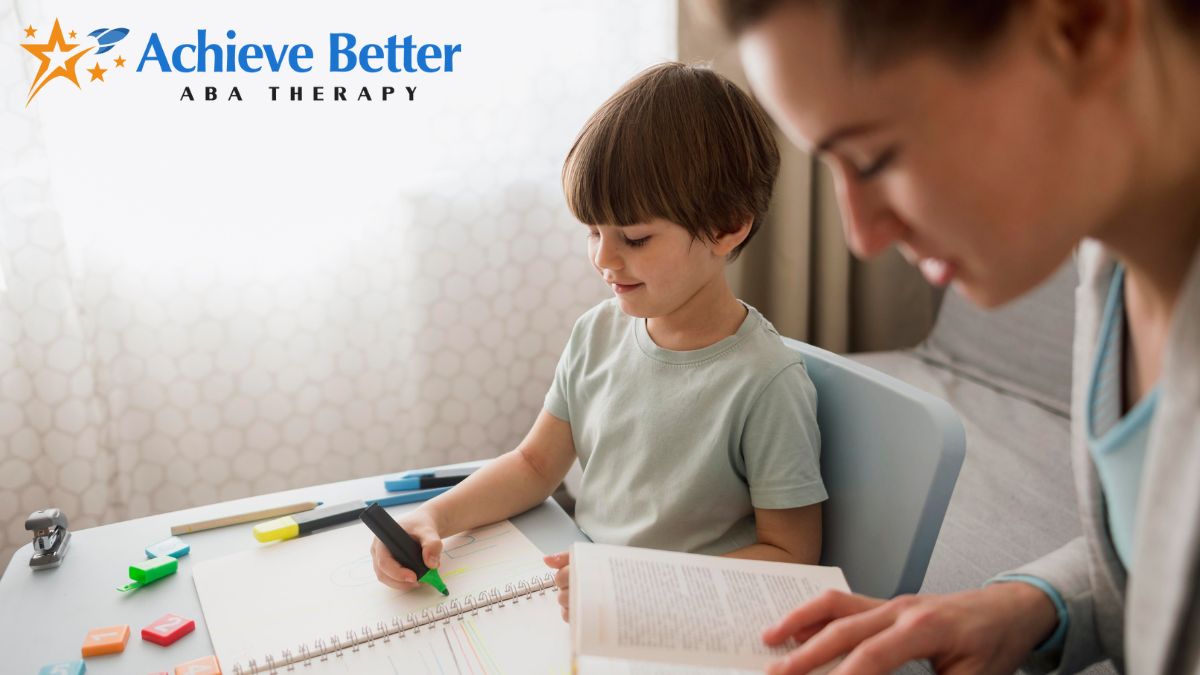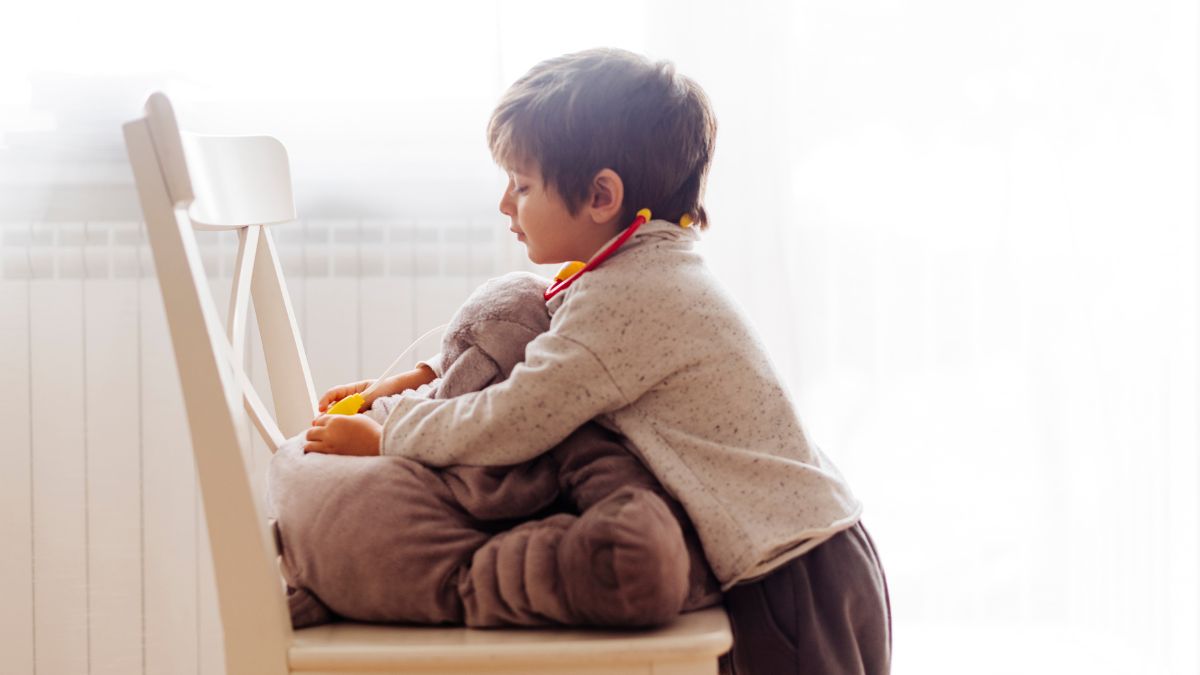Speech and Language Assessment for Autism: Key Insights
.jpg)
Every child has a unique way of expressing their world. But when communication seems harder than expected, parents may wonder what’s going on. Autism affects how a person perceives and interacts with the world, often showing up through speech delays, nonverbal cues, or repetitive language. A speech and language assessment gives families the clarity they need to understand a child’s strengths, challenges, and next steps for growth. It’s not about labeling—it’s about unlocking communication.
Why Speech and Language Assessments Matter

Early communication is the foundation of connection. When a child struggles to express thoughts or emotions, frustration can follow—for both the child and their caregivers. Assessments help professionals pinpoint what’s causing the communication breakdown and how to support improvement.
According to the National Autism Indicators Report (2022), around 40% of children with autism are minimally verbal, while many others develop speech later than peers. Identifying where a child stands early makes interventions more effective and life-changing.
In short, speech assessments answer the “why” behind communication differences—so therapy can focus on the “how.”
What Happens During a Speech and Language Assessment?
A speech and Language Assessment for autism is not a one-size-fits-all test. It’s a detailed, step-by-step evaluation designed to capture how a child listens, understands, and expresses language. Here’s what typically happens:
1. Parent Interview and Background Check
The speech-language pathologist (SLP) begins by talking to parents or caregivers. You’ll share milestones, daily routines, social habits, and any concerns you’ve noticed. This step helps create a full picture of your child’s communication in real-life settings.
2. Observation and Play-Based Tasks
Young children often communicate best through play. The SLP may observe how your child plays with toys, responds to prompts, or imitates actions. These moments reveal nonverbal communication cues such as eye contact, gestures, and turn-taking.
3. Formal Testing
Standardized assessments and structured tools are often used to carefully measure a child’s receptive skills (how well they understand language) and expressive skills (how effectively they communicate verbally), providing objective insights to guide support and intervention strategies.
4. Social Communication Review
Autism often involves differences in social language—known as pragmatics. The SLP looks at how your child initiates conversation, maintains eye contact, and adapts tone or topic.
5. Feedback and Next Steps
After testing, the SLP explains results in clear, practical terms. You’ll receive recommendations for therapy, home activities, and possibly referrals to other specialists.
Communication and Language Assessments for Autism
Understanding your child’s communication strengths and challenges is the first step toward meaningful support. These assessments help caregivers and professionals identify developmental milestones and areas needing attention.
Preschool Language Scales, Fifth Edition (PLS-5)
- Age: Birth – 7:11
- Purpose: Evaluates emerging communication skills, comprehension, and expressive language from pre-verbal interactions to early literacy.
Bayley Scales of Infant and Toddler Development, Fourth Edition (Bayley-4)
- Age: 16 days – 42 months
- Purpose: Assesses cognition, language (receptive and expressive), motor skills, social-emotional development, and adaptive behavior. Administered by qualified speech-language pathologists (SLPs).
Vineland Adaptive Behavior Scales, Third Edition (Vineland-3)
- Age: Birth – 90+ (parent/caregiver forms), 3:0 – 21:11 (teacher forms)
- Purpose: Measures communication, daily living skills, socialization, motor skills, and maladaptive behaviors. Conducted via interview or questionnaire, highlighting real-world functioning.
Peabody Picture Vocabulary Test, Fifth Edition (PPVT-5)
- Age: 2:6 – 90+
- Purpose: Evaluates receptive vocabulary without requiring reading or writing skills.
Expressive Vocabulary Test, Third Edition (EVT-3)
- Age: 2:6 – 90+
- Purpose: Assesses expressive vocabulary skills, helping identify gaps in spoken word use.
Bracken Basic Concept Scale (BBCS-3:R & BBCS-E)
- Age: 3:0 – 6:11
- Purpose: Receptive and expressive tests measure understanding and labeling of foundational concepts for academic readiness.
Boehm Test of Basic Concepts, Third Edition – Preschool
- Age: 3:0 – 5:11
- Purpose: Evaluates understanding of 26 core concepts critical for early childhood learning, tested across various contexts.
Clinical Evaluation of Language Fundamentals (CELF Preschool-3 & CELF-5)
- Age: 3:0 – 21:11
- Purpose: Assesses semantics, morphology, syntax, pragmatics, and pre-literacy skills. The CELF Metalinguistics edition targets higher-level language skills for students with subtle communication difficulties.
Children’s Communication Checklist-2 (CCC-2)
- Age: 4:0 – 16:11
- Purpose: Profiles social language, sentence structure, vocabulary, and pragmatic skills, helping identify communication impairments.
Sensory Profile 2
- Age: Birth – 14:11
- Purpose: Evaluates sensory processing patterns and how they affect communication and daily functioning.
Social Skill Improvement System (SSIS) Rating Scales
- Age: 3:0 – 18:0
- Purpose: Measures communication, social engagement, cooperation, empathy, and self-control across home, school, and community.
Pragmatic Considerations
- Social Cues: Some children may struggle with figurative language, abstract concepts, or perspective-taking. Social cues like tone, gestures, and body language may require explicit teaching, regardless of verbal ability.
Morphology and Syntax Observations
- Error Patterns: Error patterns may resemble typical language development or developmental language disorders.
- Limited Verbal Skills: Limited verbal skills may make formal assessment challenging, but observations provide valuable insight into a child’s developmental trajectory.
Combined with Real-Life Interactions
These assessments are paired with real-life interactions to ensure that the results reflect authentic communication—not just test responses. They offer a comprehensive approach to understanding a child’s communication abilities, ensuring that interventions are tailored and practical for the child’s daily life.
What Speech and Language Assessments Reveal
The results go beyond whether a child “can talk.” They uncover patterns and strengths that guide therapy goals. Here’s what assessments often highlight:
- Speech Sound Skills: How clearly your child forms sounds and words.
- Receptive Language: How well they understand words, directions, or questions.
- Expressive Language: How they use words, phrases, or sentences to express ideas.
- Social Communication: How they use body language, gestures, or tone in conversation.
- Play and Pragmatics: How they interact with toys or peers during playtime.
Each insight becomes a roadmap for building communication skills at home and in therapy.
The Role of Early Intervention
Did you know children’s brains are most adaptable before age five? Early intervention uses that window to build strong communication foundations.
When a speech and language assessment for autism is done early, therapists can design interventions that grow alongside the child. Studies show that children who start speech therapy before age four demonstrate better long-term outcomes in language and social skills (Broome et al., 2017).
Parents also benefit—they learn practical techniques to encourage speech during daily routines like mealtime, bath time, or bedtime.
Common Signs a Speech Assessment Might Help
Wondering if your child might benefit from an assessment? Here are common red flags:
- Limited or no babbling by 12 months
- Few or no words by 18 months
- Repeating words or phrases instead of creating new sentences
- Difficulty following simple directions
- Minimal eye contact or response to name
- Using gestures instead of words to communicate
- Strong interest in specific topics but trouble engaging socially
These signs don’t automatically mean autism—but they’re clues that a professional evaluation can help uncover the best support plan.
What Parents Can Expect After the Assessment
Once the evaluation is complete, the SLP will provide a report outlining your child’s communication profile. Expect these sections:
- Summary of strengths and challenges
- Scores and interpretation from tests used
- Recommendations for speech therapy
- Suggestions for at-home activities
This collaborative approach ensures everyone—parents, teachers, and therapists—works from the same roadmap.
Therapy may focus on speech clarity, vocabulary growth, turn-taking, or improving nonverbal communication like gestures and facial expressions. Sessions are often play-based, keeping learning natural and fun.
Partnering With the Right Professionals
Parents are vital team members in a child’s communication journey. Working closely with certified speech-language pathologists and developmental specialists ensures consistent progress.
Many families also benefit from multidisciplinary evaluations that include occupational therapy, psychology, and special education. This helps address sensory, behavioral, and emotional aspects connected to speech development.
Remember: collaboration, not comparison, builds progress.
Encouraging Communication at Home
Speech development doesn’t only happen in therapy sessions. Parents can encourage growth in everyday moments. Try these practical tips:
- Follow your child’s lead: Talk about what they’re doing or looking at.
- Model simple phrases: Use short, clear sentences like “Ball rolling” or “Dog barking.”
- Celebrate all communication: Words, gestures, sounds, or signs—all count!
- Read together daily: Point to pictures, name objects, and ask open-ended questions.
- Create routine-based talk time: During meals or walks, describe actions naturally.
Consistency and patience build confidence faster than correction.
FAQs About Speech and Language Assessments for Autism
.jpg)
1. How long does a speech and language assessment take?
It typically lasts between 1 and 2 hours, depending on your child’s attention span and the number of tests used.
2. Can nonverbal children be assessed?
Absolutely. Assessments include gestures, eye contact, sounds, and picture-based communication—not just spoken words.
3. What’s the difference between speech and language delays?
Speech delay involves difficulty making sounds, while language delay relates to understanding and using words or sentences.
4. Will my child need therapy right away?
If the assessment finds areas for improvement, the SLP will recommend therapy frequency. Early action helps, but progress happens at each child’s pace.
5. How can I prepare my child for the assessment?
Keep it simple. Tell your child they’ll play games and talk with a friendly helper. Bringing a favorite toy or snack can ease anxiety.
The Reassurance Every Parent Deserves
.jpg)
Getting a speech and language assessment for autism isn’t about labeling—it’s about understanding. Each result reveals a child’s unique communication map, helping families focus on progress, not perfection. With early support, children often develop new words, stronger connections, and more independence over time. Achieve Better ABA gives your child the foundation for success, empowering them with the skills they need for growth.
For parents, that means less worry and more moments of joy when communication starts to click. When the small steps begin to add up, every milestone is a victory. Partner with Achieve Better ABA and start seeing meaningful improvements in your child’s communication skills.
If you’re in North Carolina, reach out to us today. We’re here to guide your family through each phase, helping your child unlock their full potential.
Similar articles
Contact us today to learn more.




.jpg)






